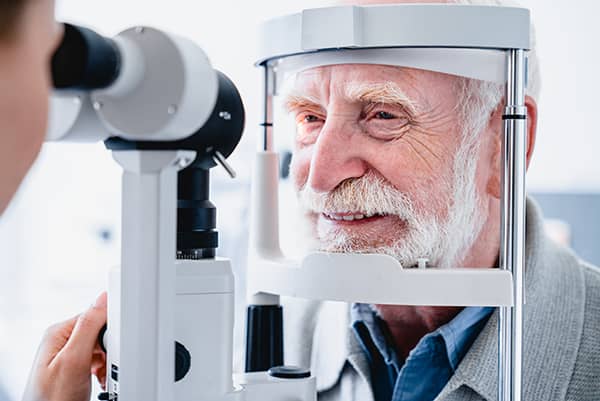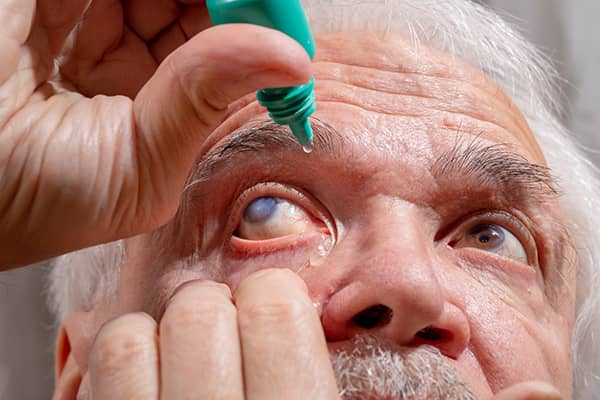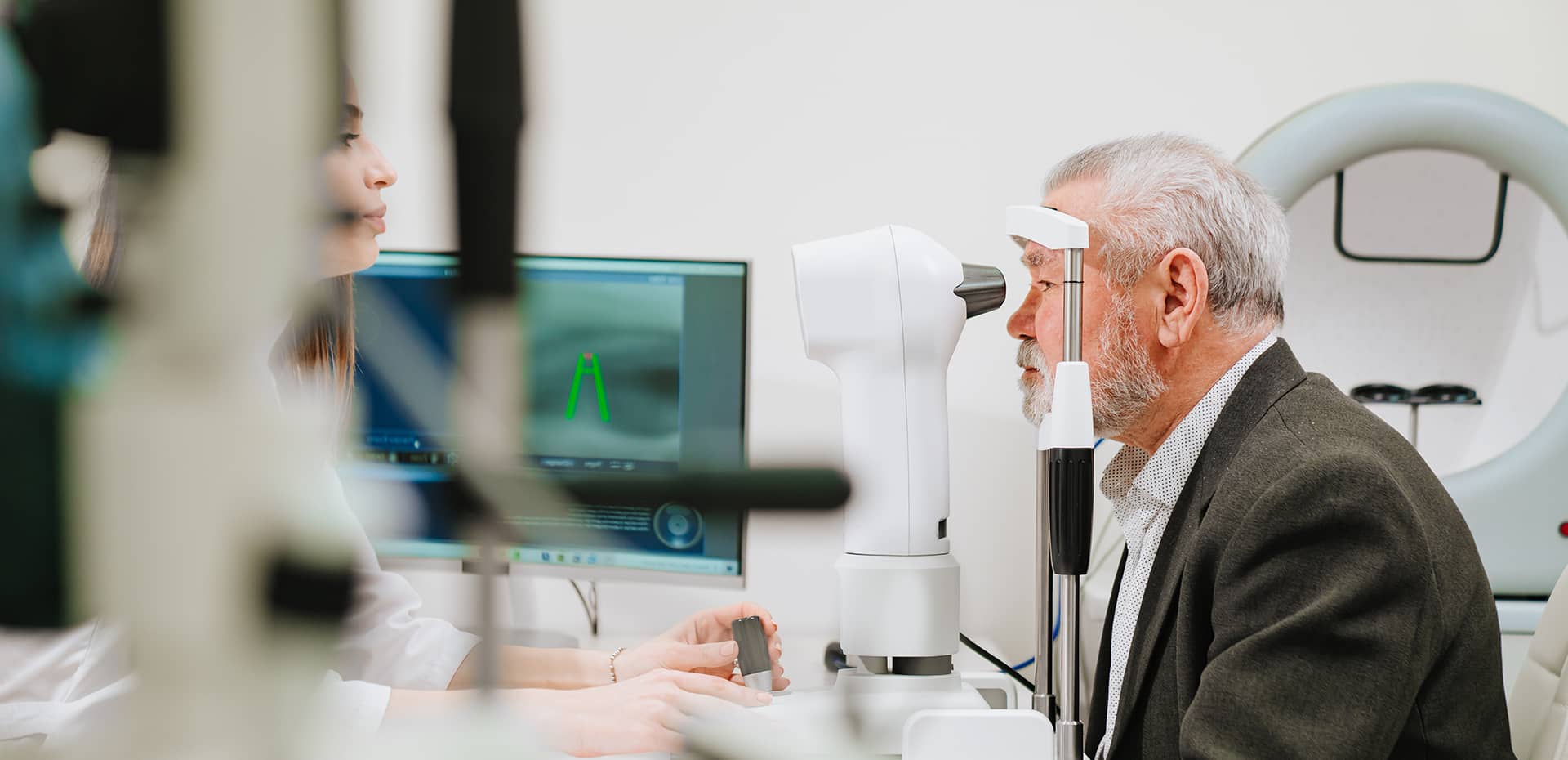Before Glaucoma Treatment: What is this condition?
Glaucoma is the second leading cause of blindness throughout the world. The term glaucoma actually describes a group of eye diseases, all of which cause damage to the optic nerve. Since the optic nerve provides the pathway for the eyes and brain to communicate, any damage to it will eventually result in vision loss and blindness.
Here’s what you need to know about glaucoma.

Symptoms of Glaucoma
Other than progressive vision loss, glaucoma signs of glaucoma are not always visible. This condition can be provoked by blunt trauma to the eye, a chemical injury, an eye infection, a blockage of blood vessels, high blood pressure, or inflammation.
Optic nerve damage can cause irreversible vision loss. So, the only way to prevent glaucoma-related blindness is by having regular eye exams to diagnose your vision loss as soon as possible. An early diagnosis of glaucoma can prevent its degenerative effects.
Before Glaucoma Treatment: Types of Glaucoma
Acute closed-angle glaucoma and open-angle glaucoma are the most common types of glaucoma. Symptoms may vary depending on the form and severity of the eye condition.
Open-angle glaucomas occur when fluid builds up behind the iris (the colored portion of the eye) and pushes forward against the lens of the eye. This causes pressure inside the eye to rise, damaging the nerves that carry visual information to the brain. Closed-angle glaucoma damage occurs when scar tissue forms within the drainage system of the eye, blocking the flow of fluid out of the eye.
Typically, patients with open-angle glaucoma will have blind spots in their peripheral or central vision and/or tunnel vision as the condition advances. Symptoms of patients with acute angle-closure glaucoma may include headaches or migraines, eye pain, nausea, blurry vision, halos around bright lights, and redness in the eye.

Benefits of Glaucoma Treatments
Glaucoma treatment slows the progression of glaucoma, but even then, 15-20% of patients will lose their vision in at least one eye within 20 years. In some cases, glaucoma treatments can improve vision even though the damage to the optic nerve is considered permanent. At the very least, the goal of glaucoma treatment will prevent further damage to the optic nerve and peripheral vision.
Without treatment, glaucoma will inevitably result in some vision loss and possibly blindness.

Glaucoma Treatment Consultation
A consultation at EyeSight Hawaii is the first step in your journey to improved vision. Consultations are used to verify whether or not you are at risk of loss of vision due to glaucoma.
During your consultation, one of our experienced surgeons will examine your eyes and ask about your risk factors for glaucoma. If you are nearsighted, have a past eye injury, have a family history of glaucoma caused by diabetes, or have a history of vascular shock, you are more at risk for developing glaucoma. African Americans are also six times more likely to develop glaucoma.
The glaucoma specialist will go over your options so that you feel comfortable and confident before your procedure. The consultation is also a great time for glaucoma patients to ask any questions they may have about the treatment and provides you with the opportunity to get to know your doctor. If you have any questions about our Glaucoma treatment in Hawaii, give us a call and we can help.
How to treat Glaucoma?
Glaucoma is usually treated by using eyedrops that lower the intraocular fluid (IOP) inside the eyes. If these prescription eye drops fail to control the IOP, laser treatments or eye surgery may be used.
Some glaucoma surgeries use lasers to lower the intraocular pressure, while others require a surgical process. Laser therapy, like all glaucoma procedures, helps fluid drain from the eye. Laser surgery is also a cheaper, less invasive alternative to traditional surgery.

A trabeculectomy is a manual type of glaucoma surgery used to treat open-angle glaucoma. For this form of glaucoma, the surgeon creates a tiny opening in the top of the eye, under the eyelid. This opens the drainage system of the eye so that the eye fluid flows more freely.
Closed angle glaucoma treatment usually consists of surgery to remove scar tissue and restore normal drainage. This allows fluid to drain normally. Laser surgery is effective at lowering intraocular pressure, but it doesn’t eliminate the risk of developing secondary glaucoma later in life.
Another type of surgery, called glaucoma implant surgery, treats congenital glaucoma, neovascular glaucoma, and glaucoma caused by an injury. During this procedure, a surgeon places a tiny tube and plate into the white of the eye. This tube drains extra fluid and lowers eye pressure.

Glaucoma Treatment Recovery
During glaucoma surgery, you will be awake and the surgeon will administer numbing medicine and a mild relaxant. You can usually go home the same day but you will need someone to drive you.
After the procedure, you’ll likely feel tired and sore. You might even feel nauseous or dizzy. These symptoms are normal and don’t indicate anything wrong. Probably, you’ll sleep through the night after the surgery. You’ll also notice that your vision will improve immediately after the surgery. This is because the pressure inside your eye will decrease.
Your surgeon will most likely prescribe eye drops to prevent any eye infection and swelling. You may want to avoid any strenuous activity for a week or two following the surgery. Most patients will recover fully within 3 to 6 weeks.
What Patients Say
Frequently Asked Questions About Glaucoma Treatment
Patients who are diagnosed with glaucoma will be treating their condition continuously for the rest of their lives. Initially, the cost will be about $600 per year. But as the disease progresses, costs could increase to $2500 a year.
Most insurances, including private insurance and Medicare, consider glaucoma surgery medically necessary. A recent estimate of glaucoma costs for more severe cases puts laser treatments at $1,000 to $2,000 per eye and manual surgeries that need to be done in a hospital at around $11,000.
Certain people have a higher risk of developing glaucoma. The most common risk factors include:
Being 60 years or older
Being Black, Asian, or Hispanic
High internal eye pressure
A family history of glaucoma
Sickle cell anemia
Thin corneas
Being nearsighted or farsighted
Certain eye injuries or eye surgery
Long-term corticosteroid eyedrop usage
Glaucoma is not preventable, but if you catch it early enough, it is treatable. Be sure to schedule regular eye exams to diagnose your glaucoma before it starts to affect your quality of life.
Glaucoma surgery increases your risk of developing cataracts later on. It could also cause the pressure in your eye to drop dramatically, which can cause distortions and vision loss. Surgical risks also include issues with the cornea and a potential increase in vision loss.
The only currently approved treatment for glaucoma is to lower intraocular pressure (IOP), which can be achieved with eyedrops, lasers, or through surgical intervention.
These tips may help you control high eye pressure or promote eye health.
Eat a healthy diet.
Exercise safely.
Limit your caffeine.
Sip fluids frequently.
Sleep with your head elevated
The effectiveness of glaucoma surgery varies from person to person. Many people find that the benefits last for a long time. For others, the opening created during the surgery closes up and they need to have the procedure repeated. Make sure you get regular tests on your eye pressure so your surgeon can act quickly if the opening closes.
Unfortunately, glaucoma treatments and surgery can only prevent the condition from worsening. As of right now, no treatment or surgery can reverse glaucoma-related vision loss.
Most of the related studies document follow-up for a one-year period. In those reports, it shows that in older patients, glaucoma filtering surgery is successful in about 70-90% of cases, for at least one year. Occasionally, the surgically-created drainage hole begins to close and the pressure rises again.
Due to elective procedures being available, many people assume that insurance won’t cover eye treatments. But many eye diseases, including glaucoma, are covered under most major health insurance programs.
About EyeSight Hawaii
EyeSight Hawaii is the leading specialist in dry eye, cataracts, LASIK surgery, and cornea surgery in Hawaii. Founded by chief surgeon John D. Olkowski, M.D., EyeSight Hawaii has been serving patients for over 20 years, offering the latest technology and most advanced procedures. If you’re seeking dry eye treatment in Hawaii, you can read more and schedule an appointment here.
Contact Us Today
Glaucoma treatment is necessary to prevent related vision loss and maintain your quality of life well into old age. EyeSight Hawaii in Honolulu, HI, and Kahului, HI has the experience and knowledge to prevent vision loss due to glaucoma. To know more about the treatment, schedule an appointment online or call our office to set up a consultation today!

